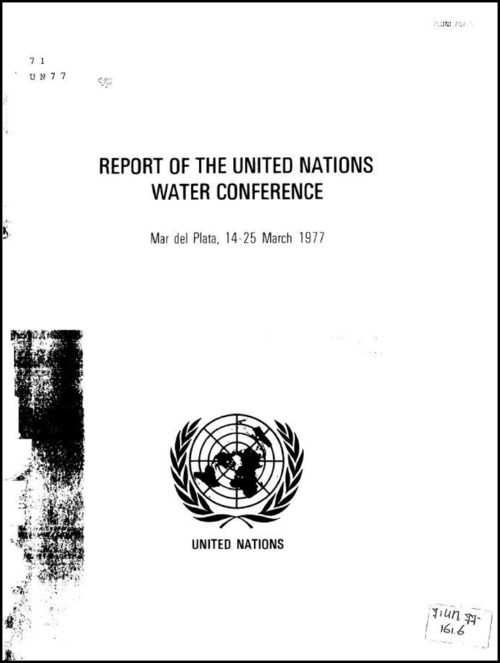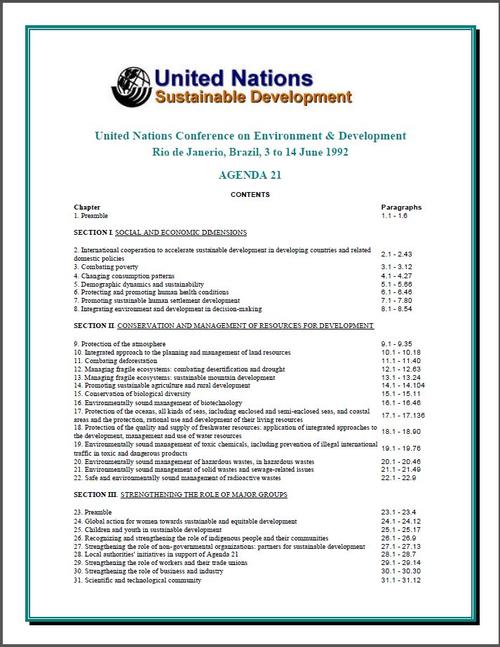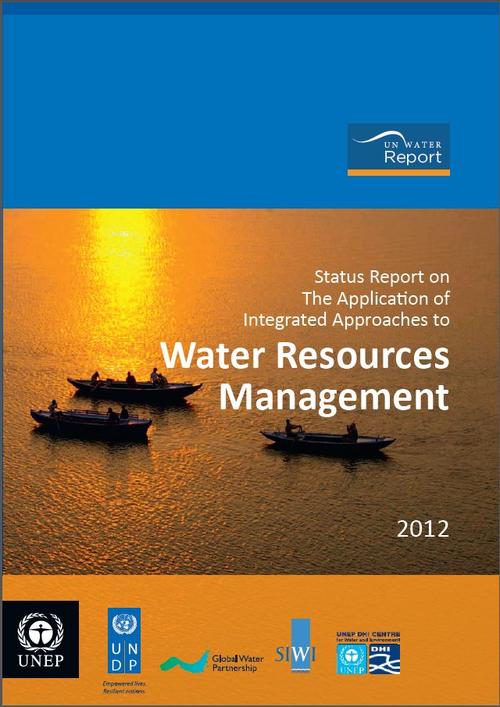History of IWRM
Cover: Report of the UN Water Conference 1977
Image Credit: UN (1977)
Cover: UN Conference on Environment & Development 1992 (AGENDA 21)
Image Credit: UNCED (1992)
Cover: Status Report on The Application of Integrated Approaches to Water Resources Management 2012
Image Credit: UNEP (2012)
- One of the earliest and often cited examples of IWRM is the initiation of the Tennessee Valley Authority (TVA) in 1933. The Authority not only took action by managing flood control and power production but also by integrating the issues of erosion control, recreation, public health and welfare. The TVA effort included many elements of the today´s concept of IWRM, which is the overall planning of natural resource utilization combined with economic, social and environmental objectives. (LNV 2004)
- In 1957, a UN report on “Integrated River Basin Development” determined that water infrastructure by itself does not bring development and therefore supporting services are needed. However, the integration did not refer to the different water uses yet. Until the 1980’s many integrated irrigation development projects used the supporting services as tools to develop irrigation agriculture and did not consider other uses of water. (LNV 2004)
- In 1977, the International Water Conference in Mar de Plata explicitly called for the need of a co-ordination within the water sector. "Institutional arrangements adopted by each country should ensure that the development and management of water resources take place in the context of national planning and that there is real co-ordination among all bodies responsible for the investigation, development and management of water resources." (UN 1977) The Conference also recommended the expansion of irrigation agriculture but apparently did not recognize and consider the high water demand as well as the negative environmental impacts. However, other issues expressed in 1977 still seem valid today:
- Community water supply: All people on earth should have a readily available supply of clean water.
- Pollution: Many rivers and lakes are polluted by uncontrolled discharge.
- Shared water resources: No progress can be reached without a harmonized framework by the nations.
- In January 1992, to prepare for the United Nations Conference on Environment and Development (UNCED) in Rio de Janeiro, the water sector organized the International conference on Water and the Environment in Dublin. At the conference, 500 water experts from a hundred countries and 80 international, intergovernmental and non-governmental organizations attended. The keynote papers for the conference are containing almost all characteristics of IWRM as it is understood today. The most important outcome however were the Dublin Guiding Principles. At the UNCED in June 1992, the importance of a coordination in the water sector was stated once again. Realizing that the statement concerning the coordination within the water sector that had been recommended at Mar del Plata in 1977 is far less ambitions than the fundamental changes needed to achieve the holistic management - an integrated water resources management. Therefore, the Dublin Guiding Principals were assembled at the conference as part of the AGENDA 21. (LNV 2004)
- In 2012, a report on the status of IWRM was prepared after a request of the UN Commission on Sustainable Development (UNEP 2012). The report should take stock of the situation 20 years after the recommendations for integrated approaches were made at the UNCED Conference in Rio. The report was based on responses from 134 UN member countries. Some of the key messages and recommendations from the report are:
- Since 1992, 80% of the countries have embarked on reforms to improve the enabling setting for water resources management based on integrated approaches.
- A majority of countries perceived increasing water-related risks and an intensified competition for water over the past 20 years.
- Countries that have adapted integrated approaches report more an advanced infrastructure development, but further efforts are needed to ensure appropriate levels of coordination.
- Countries report a gradual, but positive, trend in financing water resources development and management with more diverse sources of finance, but only little progress on payment for water resources services.
- Countries report improvements of the institutional framework together with improved policies, laws and systems over the past 20 years. This has led to better water resources management practices bringing important socioeconomic benefits.
- Integrated approaches of water resources management and development are critical for progress towards a green economy. (GWP 2013b)


